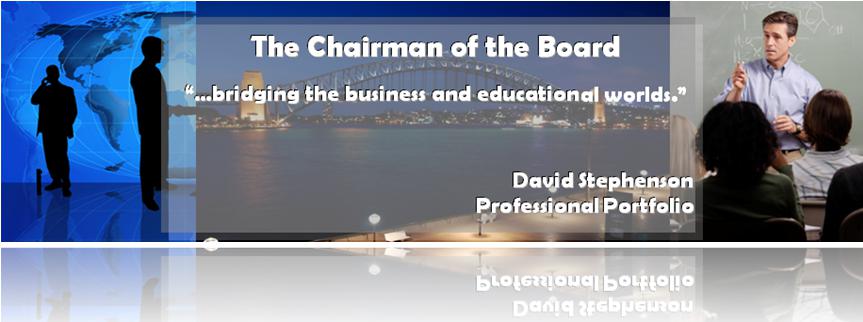

| DESIGNER | LEADER | LEARNER | MENTOR |
| REAL WORLD EDUCATOR | INNOVATOR |
| One of the
most central ideas that I will carry away from the ITS program is the
need to be a good lesson designer or builder. Not only is there
the need to
make lessons authentic in order to gain student buy in, but authentic
learning also promotes the development of higher order knowledge and
thinking skills. Throughout this program, we have learned about
essential questions to address in developing lessons (such as what the
affordances of specific tasks and tools are), acronyms that promote
thorough lesson development as well as technological tools that
assist us in developing robust lessons that address 21st century
student interests and needs. All of the contents of our Designer’s Tool Bag can assist us in a variety of situations and help us work towards meeting a wide range of student needs. Everything from methods in designing instruction to systems that ourselves and our students can use in order to be better users of content information can lead to higher levels of student understanding, achievement and engagement. Regardless of how I design lessons and whether or not my lessons incorporate technology, it is always essential to keep best practices in mind. One of the best practice concepts that we studied in this program is from Situated "Cognition and the Culture of Learning" (1988) – modeling, coaching, and then fading. Modeling allows students to have learning activities demonstrated for them and be shown through example how to complete a specific activity. Coaching then allows students to begin completing activities themselves, but with guidance from the teacher. Fading then allows for students to begin completing activities on their own as the teacher begins to step back and give less and less guidance through the completion of the activity. I have employed this teaching concept extenstively in my classroom. Modeling, coaching, and fading is especially important to consider when introducing technological tools that students may be unfamiliar in using. It is my "go to" teaching concepts. On of the greatest benefits of the program for me was the depth, breadth and power of the Authentic Problem. For an instructor, designing lesson plans is a crucial skill to learn in order to be an effective teacher. Conversely, there are many design principles to be considered for a well-designed lesson plan. One principle that I used quite a bit previously to the ITser prgram was putting students in real world scenarios. I had no idea of the value until this program. Formal concept is covered in class is ACTS, which stands for Authentic problem, Clear outcome, Thinking skills, and Software skills. The idea here is to be sure to use authentic situations to anchor learning in the real world, while ensuring that you are aware of what thinking and software skills the students will need in order to be successful. My students love these concepts and really immerse themselves in the activities. Another principle that I have deployed is FACTS, which stands for Foundations, Activities, Content, Tools, and Systems of Assessment. The idea behind this principle is to build a unit in a way that ensures that all parts are being planned thoroughly and the content, tools, and foundations of learning are represented within the activities and assessments being used. I cannot state this enough: designing learning opportunities that are meaningful and authentic is one of the most important tools an educator has. It is also the center piece of my vision of "keeping it real world." It is sad that many educators today do not employ authentic problem activities into their curriculums to engage the students more readily. I see so many disengaged students working on "worksheets" or other, less engaging activities. It is not diffult to employ these concepts and the students are the primary benefactor. From a student perspective, in order for a skill to be fully learned and become applicable in the real world, it must be taught in the context of its use. This means using the skill in the way that real people use them, like using math like a business person or scientist might on the job. In our educational system today, the way teachers skills are broken up and taught in a passive manner guarantees that the learner will NOT be able to use the skill in the real world. There are many employers who are finding that they have to reeducate their workers when they begin their career. This would not be necessary if math, science, languages, and history lessons were framed in a way that reflected how these content areas are used in the world today. Lastly, from a broad based perspective, my designer tool bag now has many different types of "tools" that I can employ based on their affordances in my curriculum. Through out these last two years, I have been developing these lesson plans, including lesson plans in database, telecommunications, digital video editing and podcasting areas. |